
Arpi on Tile
Five Tile Designs That Stand the Test of Time
Cersaie 2024 showcases new tile concepts and addresses tile’s synergy and sustainable alliance with design and architecture.
Image courtesy Cersaie
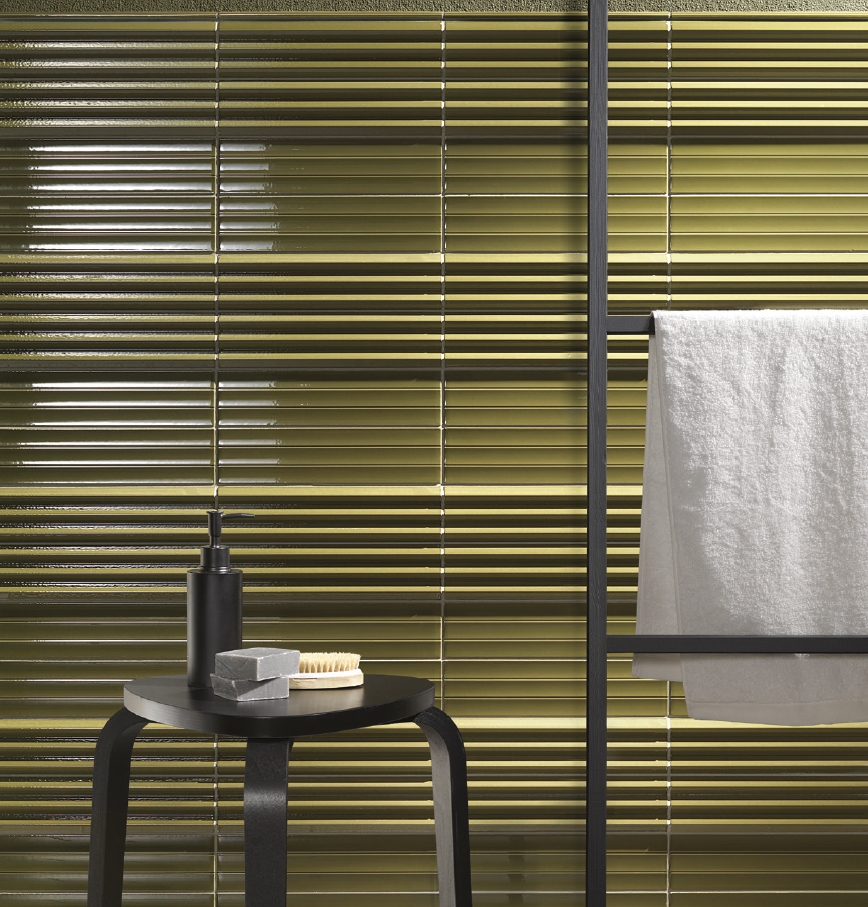
Abacus from Settecento amplifies dimensional wall tile with its choice of colors and protruding geometric design. (Image courtesy Settecento)
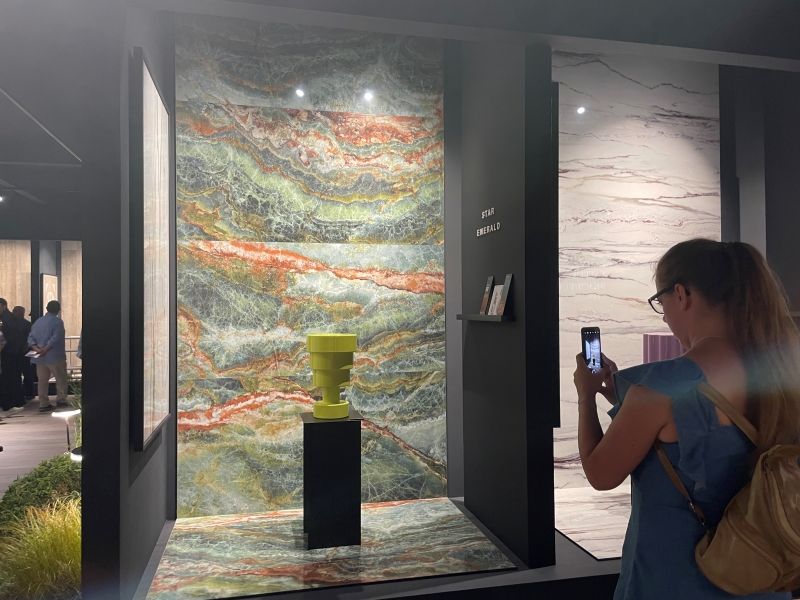
Star Emerald from Ceramica Sant’Agostino features a marble look visage with all the benefits of tile – sustainability, focus on health and wellness, and a unique look. (Image courtesy Cersaie)
By Arpi Nalbandian Tileometry
With trade show season approaching, it’s important to be aware of not only what is trending in tile designs, but also what your clientele is looking for in a long-lasting, sustainable product. Whether it’s a new construction, remodel, or a small update, it’s essential to quickly provide the necessary information, expertise, and available material/installation options. If you don’t stay up-to-date, then you’re taking a risk by allowing someone else to fill the void you created.
That being said, let’s look at five tile designs that have continued to remain dominant:
- Patterns: Whether it’s a vintage Spanish tile, handmade cement tile or patterns made using inkjet technology, patterns are hot with designers and consumers. It can be a full-scale pattern or a mix-and-match with solid tile for an accented look – the result can be as eye-catching or daring as you or your client would like.
- Dimensional: It goes without saying that dimensional tile – porcelain or ceramic – exudes a sense of calming motion. Whether it be subtle or something akin to undulating oceanic waves, dimensional tile is experiencing an uptick in interest.
- Geometrics: Arabesque, Moorish, subway tile, hexagons, fish scales, circles, and squares – geometry plays a huge role when designing a space! By providing various, shapely options, the vision of a Spanish hacienda, Italian Riviera villa or French chateau can easily be brought to reality.
- Mosaics: Mosaics continue to withstand design fluctuations and finicky trends, whether it’s for a backsplash, bathroom or kitchen wall, fireplace, or an entry tile medallion. Mosaic tile is also considered as an excellent flooring choice when it comes to Universal Design or Aging in Place environments. Further, waterjet technology continues to create nuanced designs for chic, luxurious spaces.
- Large Format/Porcelain Tile Panels: With nature-inspired designs, large-format tiles and porcelain slab lend themselves to making an installation look sleek, modern, and cohesive. Current manufacturing technology effortlessly integrates marble-like veining, as well as wood- and fabric-like ridges and textures.
Keep in mind for all the time-tested designs and formats, there are some that have declined due to changing tastes (think non-dimensional or uninteresting beige and grays). As an expert in your field, clients expect you and your staff to be knowledgeable and current not only with what product to use, but how to install it properly for long-lasting, sustainable use.
Speaking of which, the long-awaited first day of the 41st edition of Cersaie has arrived! The annual tile and stone exhibition, located in the picturesque and historical city of Bologna, Italy, is set to serve as the launching pad for trend-setting designs, patterns, and materials for its global audience. Architects, designers, retailers, and distributors are just some of the visitors Cersaie receives Sept. 23-27.
Did You Know: The University of Bologna was the first university? It is the oldest in the world (founded in 1088) and still going strong!
Although I won’t be attending Cersaie this year, thankfully I can rely on several valuable sources to help me spread the word about the new tiles you will be seeing in your local showrooms and design centers. Here are just a few I’d like to focus on for this article. The upcoming November/December 2024 issue of Stone Update will include a comprehensive round-up of newly released Italian ceramic and porcelain tile products.
New Products at Cersaie
Atlas Concorde: Boost Natural Pro
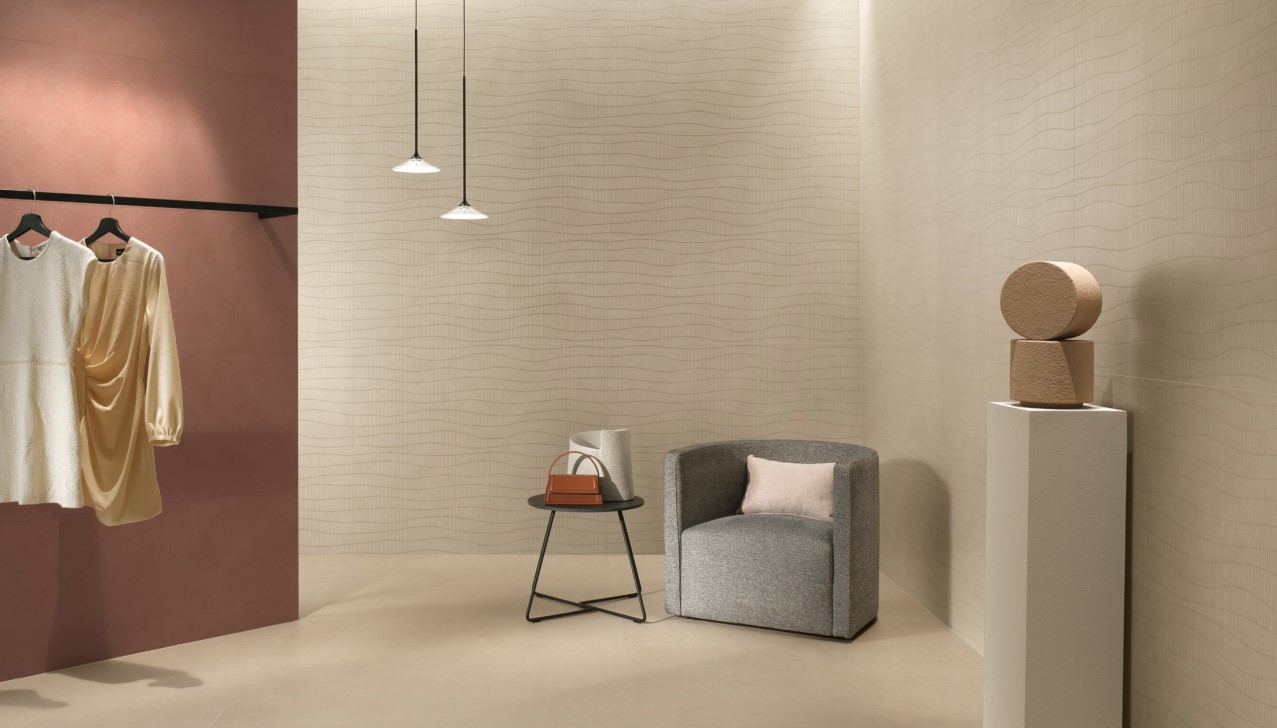
Featured here are Atlas Concorde’s Boost Natural Pro collection in Lava (wall tile) and Sand (floor tile) using the Motion Out textured pattern. (Image courtesy Atlas Concorde)
The essence of the hand-crafted concrete effect, inspired by the elements of raw earth, Atlas Concorde unveils eight new light and warm colors selected by renowned architect Matteo Brioni. Together with the company’s Boost Natural (which features a palette of 15 unique shades), the three-dimensional surfaces masterminded by Brioni effortlessly embellish Boost Natural Pro’s wall tile. Together with its patented Velvetech and Sensitech technologies, this new collection completes the series’ extensive profile.
SICIS: Focus on Bathroom Fixtures
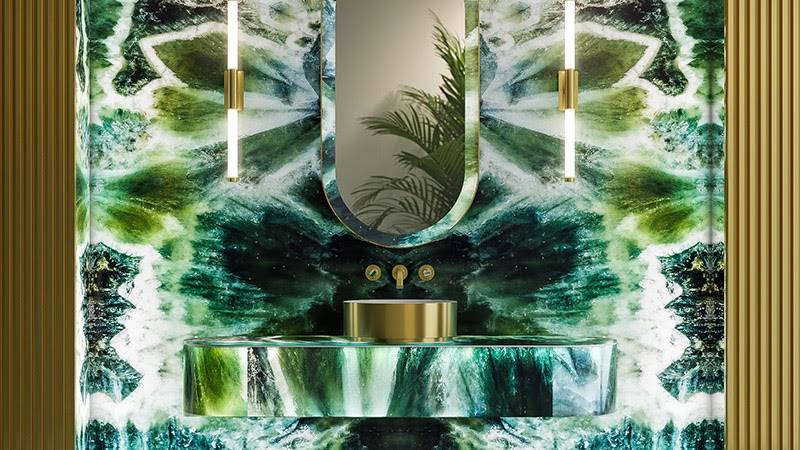
SICIS’ Vetrite will be the focus on a newly revamped exhibit space at Cersaie 2024. (Image courtesy SICIS)
SICIS announced its return to Cersaie following a one-year hiatus. As such, SICIS will not only exhibit its renowned wall products, but will also present a new collection dedicated to the bathroom sector, designed with the residential and hospitality sectors in mind, includes designer baths, showers, and washbasins. The common denominator in SICIS’ latest release is its Vetrite product taking center stage in all its backlit glory. SICIS’ exhibit can be found in Hall 22, Stand B45.
Pritzer Architecture Prize Winner to Deliver Keynote
Japanese architect Riken Yamamoto, winner of the 2024 Pritzker Architecture Prize, will deliver this year’s Cersaie keynote lecture as part of the “Building, Dwelling, Thinking” cultural program on Sept.r 26 at 11 a.m. in the Sala Europa of the Palazzo dei Congressi at BolognaFiere. Advance registration is required. Yamamoto will be the 13th Pritzker Prize Laureate to deliver the prestigious and eagerly anticipated lecture at Cersaie. Born in China’s capital Beijing in 1945, Yamamoto relocated to Yokohama, Japan after World War II. The son of an engineer and a pharmacist, Yamamoto gained his bachelor’s degree from Nihon University in 1968, then continued his studies at Tokyo University of the Arts, where he earned a Master of Arts in Architecture in 1971. Two years later, he founded his own firm, Riken Yamamoto & Field Shop, which he continues to direct. Unlike some of his compatriots who have also received the Pritzker Prize, Yamamoto’s five-decade architectural career has largely focused on Asia. His only major project outside the Asian continent is The Circle Convention Center in Zurich, a versatile convention, event, and retail complex located close to the city’s airport. His other projects are predominantly located in Japan, China, and the Republic of Korea, and include private residences, social housing complexes, educational facilities, university campuses, institutional headquarters, temporary housing in Heita disaster area and museums. Interestingly, Yamamoto’s architectural philosophy is closely intertwined with social issues. “Every house is an integral part of a city, and every family is a vital component of the community,” he says. “The relationship between community and family, like the transition space between the city and private residences, is fundamental to the existence of the community.”
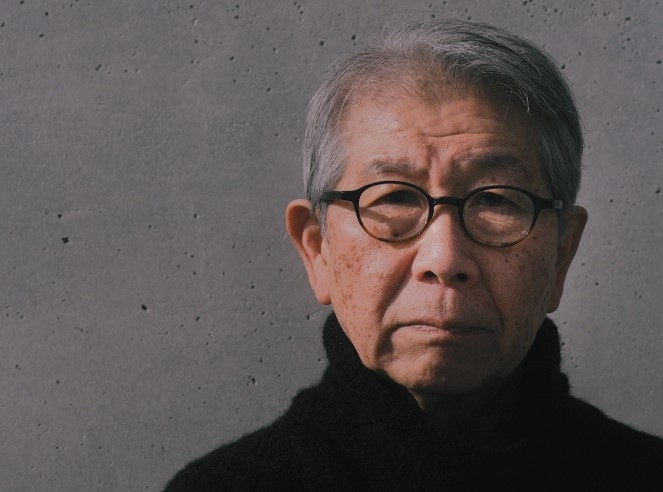
2024 Pritzker Architecture Prize Award Laureate Riken Yamamoto. (Photo by Tom Welsh; Image courtesy The Pritzker Architecture Prize
Focusing on Human-Machine Relationship, Training
Hosted in a more than 400 square meter (4,000 square feet) area in Hall 32 at Cersaie, the 12th Tiling Town will stage ceramic tile installation showcases led by Assoposa (the Italian National Association of Ceramic Tiling Installers and Layers). This year’s concept focuses on the relationship between humans and technology and how this collaboration can generate value, while creating a more sustainable, safe, and inclusive working environment. In particular, Tiling Town says it will emphasize the evolving role of tile layers while focusing on the safety and well-being of industry professionals at the center of the production and installation processes. The central part of the area will be divided into three sections, each with a specific focus. Section One: How experimental exoskeletons can be used to reduce the physical fatigue experienced by tile installers, to help them regain mobility after accidents, and to improve their working conditions and the quality of their work.
Section Two: How high-precision cutting machines that combine compact dimensions with ease of use, quiet operation, and excellent maneuverability can facilitate the tile layer’s work.
Section Three: How digital projectors can be adapted to available spaces while enhancing the purchasing experience by facilitating the choice of materials with installation layouts at the point of sale.
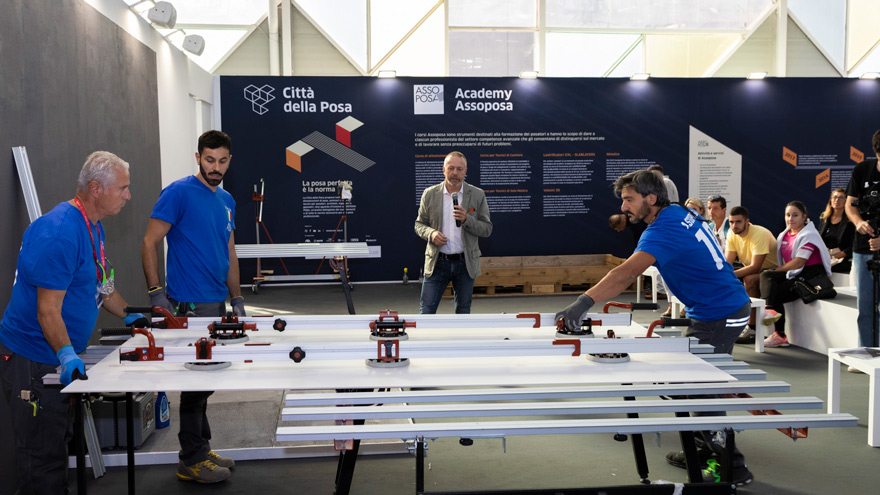
Tiling Town emphasizes the evolving role of tile layers while focusing on the safety and well-being of industry professionals at the center of the production and installation process. (Image courtesy Cersaie)
Must-Attend Conferences at Cersaie
This year, three conferences devoted to specific topics in the symbiotic world of tile and construction will be held. Each event will be held at noon on the days noted below. They are: Towards an Integrated Future: Synergies between ceramic production and building materials distribution. Set for Tuesday, Sept. 24, this event includes the participation of Augusto Ciarrocchi (Chairman of Confindustria Ceramica), Luca Berardo (Chairman of Assoposa), and Gianluca Bellini (Gruppo Made). Beyond 2024: Projections and innovations in the real estate market with the Green Homes directive: Set for Wednesday, Sept. 25, this presentation includes Giorgio Spaziani Testa (Chairman of Confedilizia), Angelo Deiana (Chairman of Confassociazioni) and Gian Battista Baccarini (Chairman of FIAIP). Building the future: Integration and innovation in the real estate and labor markets. New housing models and social inclusion in the near future: Scheduled for Thursday, Sept. 26, this conference
Fabio Millevoi (General Manager of ANCE FVG and author of the book “Breve storia sul futuro delle case”” [“Short history of the future of homes”]), Alessandro Scandurra (Architect and author of the book “Casa Rebus”), and Cesare Damiano (Chairman of the Work & Welfare Committee and former Minister of Employment).
Also of note is the outdoor area between Hall 32 and Hall 37 which will focus on the creativity of Bathroom Installation at Cersaie. Featuring a structure that measures more than 90 square meters (989 square feet), four installation teams from different countries (Italy, Switzerland, Denmark, and Brazil) will compete in the installation of ceramic surfaces for various kinds of bathrooms. The event is organized by Cersaie, Confindustria Ceramica, European Union of National Tile Associations (EUF), and the individual tile layers’ associations from the participating countries.
For more information and details of all the activities scheduled for Cersaie 2024, please visit the exhibition’s website.